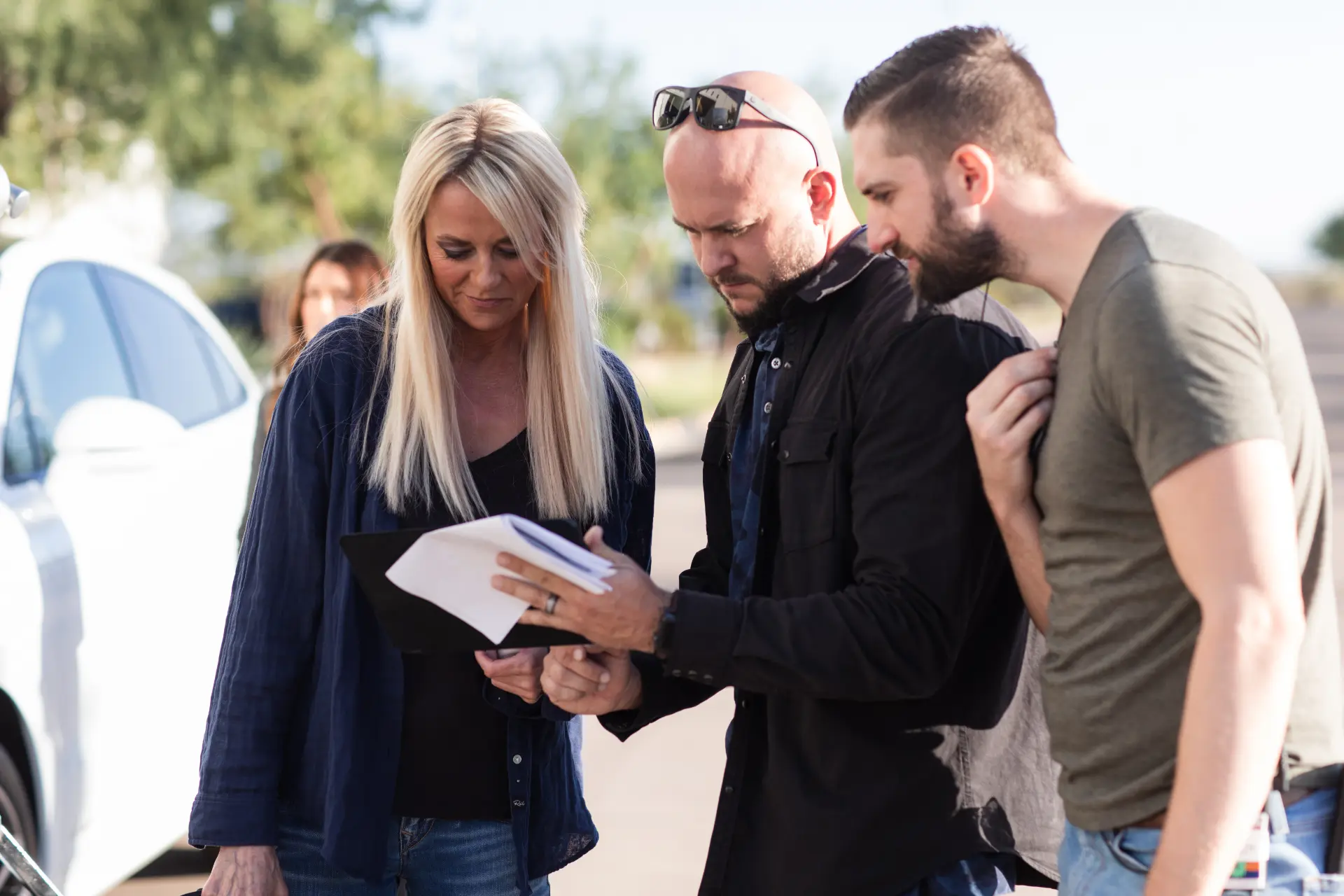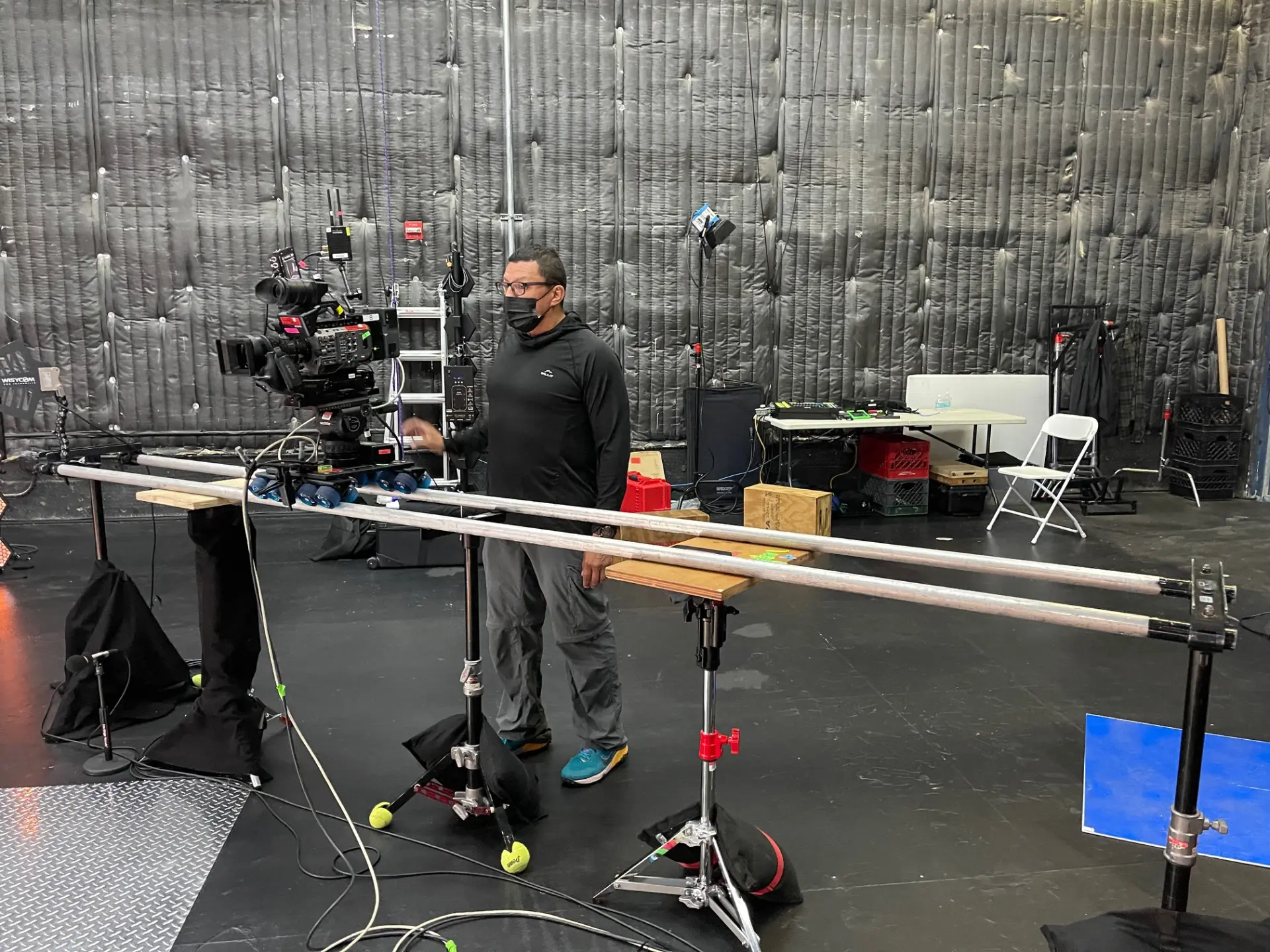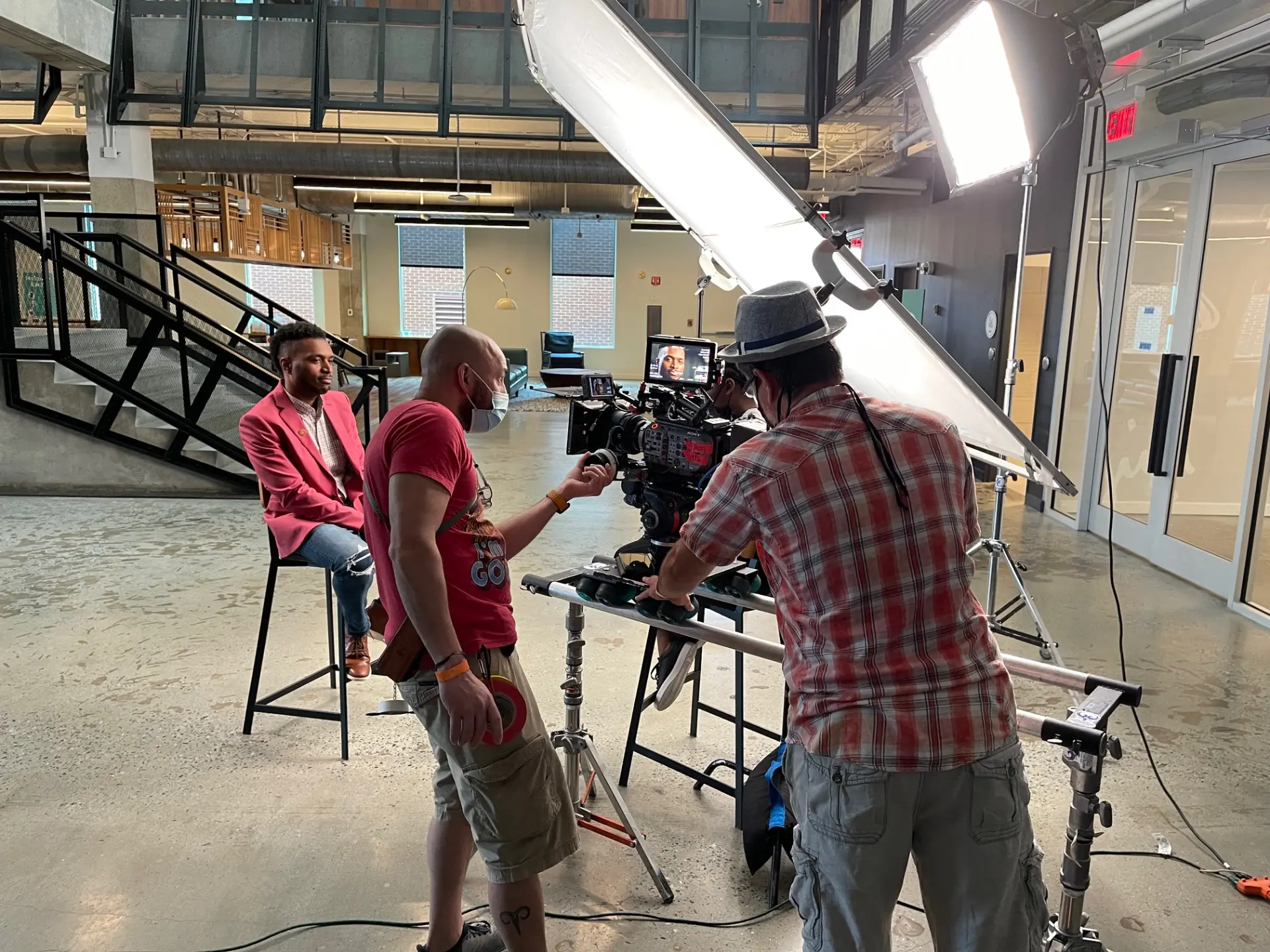Essential Steps for a Smooth Pre-Production Process
You don’t just “luck into” content that’s professional-looking and emotionally resonant. It demands planning before the cameras begin rolling. This work is known as pre-production, and it lays the groundwork for everything that follows—the importance of a robust Video Pre-Production Checklist. We cannot make mistakes, waste money, or tell the wrong story. If you ever make a brand film, social media ad, or full-scale documentary, this Pre-Production Checklist should be with you.
In this post, we’ll walk you through how to prepare before production. We’ll address the question “And, what are the pre-production steps?” By the end, you’ll have a clear plan to help you plan your successful video project.
 Why Pre-Production Matters
Why Pre-Production Matters
Most people think of recording and editing, but the true awesomeness of a great video starts before that. Pre-production is the initial stage at which ideas are used to form a decision or make a decision, after which things are fashioned to bring the project together between Producers. This stage is about:
- Defining the project and its goals.
- Ensuring every member of the team knows the role they must play.
- Managing budget and time effectively.
- Planning each detail before execution.
Without a solid Video Pre-Production Checklist, this confusion can lead to waste in time, money, and quality. Pre-production is about establishing the foundation, much like building a house. If the foundation is weak, the rest will crumble down. Every good video starts with planning that occurs before you even turn the camera on.
Step 1: Define Your Goals and Objectives
Your first item on your Pre-Production Planning Checklist is to set goals. Here are the questions you should be asking yourself:
- Why are we making this video?
- Who is the target audience?
- What do you want viewers to learn from your message?
Specific goals form everything else in the process. For instance, a video that’s used to train employees will look and be structured vastly differently from one of those YouTube ads designed specifically to go viral. Without a clear intention, you might end up with something pretty, but meaningless. Goals help you stay on track and make sure the video has a real impact.
Step 2: Identify the Target Audience
It is essential to conduct studies on what the audience would like in pre-production. Knowing your audience influences everything from the tone of your script to the length of your video. Questions to consider include:
- What is the demographic of your audience?
- Where are they located?
- What are their online habits and interests?
This information helps determine:
- The tone of the script.
- The style and visuals.
- The timing and duration of the video.
For example, working professionals may like videos that are short, concise, and to the point. Otherwise, you may find something more entertaining and lively. This means that your video will be something the right people hear.
Step 3: Develop the Core Message
Each video should convey a single main concept or message. This is the one thing your listeners ought to be able to take away from everything. Without a clear message, your video may seem diffuse and discombobulating. Ask yourself:
- What is the point of this video?
- What do you want the audience to feel when they watch it?
Center on a central idea, and your story will be consistent and easy for viewers to grasp and retain.
Step 4: Budget Planning
Budgeting might not sound like the most thrilling pre-production step, but it’s among the most important. Projects can languish or balloon in cost when there is no budget range. Consider these potential expenses:
- Equipment rental or purchase
- Crew payments
- Location fees
- Editing and post-production
- Marketing and distribution
A grounded budget keeps the project grounded – resources will be used efficiently. It’s smart to add a small cushion for unexpected costs, like overtime, extra equipment, or last-minute changes. It also helps production teams to prioritize what aspects of the piece are necessary and which are only desirable.
Step 5: Scriptwriting
Your script is the skeleton of your video. Scriptwriting is an early part of pre-production and informs everything from camera angles to the editing process. A good script should:
- Match the tone of your brand.
- Speak directly to the audience.
- Have some dialogue and some visual cues with no spoken instruction.
With a clear script, your team will be able to follow the road. A good script can prevent hassle on the day of shooting and ensure the video conveys exactly what you want it to.
Step 6: Storyboarding
Storyboarding is a visual description of your video – shot by shot. Each sketch shows what a shot will look like; it’s priceless for directors, camera operators, and editors. Quick roughs also allow a whole room of people to get an idea of the story that’s moving through.
Storyboards help:
- Reduce confusion on the set.
- Ensure important shots aren’t missed.
- Show a point of view in terms of setup for shots and scenes.
The storyboard in your pre-production planning will ensure that the camera roll proceeds smoothly, not only to minimize waste but also to reduce mistakes.
Step 7: Location Scouting
It’s all about finding the ideal location. Locations will significantly impact the vibe of your video, including lighting and the final look. Some tips to see before doing location scouting:
- Lighting conditions (natural or artificial)
- Noise levels that may impact the sound
- Space for equipment and crew
- Any permits or permissions required
The wrong place to shoot can doom the strongest script. Make sure to always physically check the location beforehand so that you can see if there are any possible issues. Space Scouting is an important part of the Video Pre-Production Checklist.
Step 8: Casting and Talent
If your video features actors, presenters, or voice-over talent, then the casting is important. It is better to do this early so that they have time to practice. Select talent that fits the message, appears natural on camera, and reflects your brand. Bad casting could make the video less believable and interesting. Adding casting to the Pre-Production Planning Checklist will ensure you get the right people on the screen.
Step 9: Production Schedule
Specific, detailed timelines to help the project remain organized and on schedule. It should include:
- Shoot dates and locations
- Call times for crew and cast
- Equipment setup and breakdown times
- Breaks and wrap-up times
A schedule helps to prevent delays, everyone knows what they should be working on, and ensures the project timeline acts as a well-oiled machine. Add your production schedule to the list for timesavers and less stress on shoot days.
Step 10: Equipment Planning
Having an idea of what gear you need is key. Your video pre-production checklist should be more detailed with a comprehensive equipment list, noting:
- Cameras and lenses
- Lighting gear
- Microphones and audio equipment
- Tripods, drones, or other special equipment
Testing equipment ahead of time, or securing it on rental before the set is built and the crew is hired, will keep you from having problems moments before filming or shooting. Equipment planning: Ensure that your team has all the necessary equipment to achieve the beautiful vision.
Step 11: Crew Roles and Responsibilities
Roles and responsibilities are a huge part of a successful operation. The following list should be included in your pre-production planning checklist as a guide:
- Director: Oversees creative vision
- Producer: Manages budget and schedule
- Camera operator: Handles filming
- Sound engineer: Manages audio
- Editor: Works in post-production
Clear roles prevent confusion, overlap, and one party not knowing what the other is doing. Such a coherent team is the backbone of a professional, efficient production.
Step 12: Legal and Permits
Don’t forget the paperwork. Legal requirements may include:
- Public or private location filming permits
- Contracts with cast and crew
- Insurance for equipment and locations
Including legal checks on your video pre-production checklist will save you from any problems in the future and protect both your team and the project.
Step 13: Wardrobe and Props
Costumes, props, and set details all contribute to breathing reality into your video. By having a wardrobe and props on your checklist, you make sure:
- Brand scope and Style continuity and identity
- Matching aesthetics with the story
- On the day of filming
You may need to dress formally for a corporate video and informally for a lifestyle advertisement. Good planning prevents downtime and helps tie scenes and continuity together.
Step 14: Shot List
A shot list is a specific outline of each scene, as well as the angle and camera movement. If storyboards provide the big picture, shot lists keep things moving along smoothly on set. A shot list should include:
- Scene description
- Camera angles and movement
- Activity, or lines for each shot
If you have a shot list in your Pre-Production Planning Checklist, it ensures that no scene is left behind and you make the most of your filming time.
Step 15: Backup Plans
Not everything goes as planned. Unanticipated delays can arise from weather, illness, or technical issues. Your video pre-production checklist should have backups in place, such as:?
- Alternative indoor locations
- Extra equipment or power sources
- Flexible scheduling
A backup plan allows you to stay on track when something unpredictable happens. No area of the deck goes unnoticed, and filming is carried out smoothly.
Step 16: Pre-Shoot Meeting
Have a pre-shoot meeting with your crew before the camera rolls. This ensures everyone:
- Understands the script and schedule
- Knows their roles and responsibilities
- Is prepared for the day ahead
The pre-shoot meeting will be the last thing on your Pre-Production Planning Checklist, and a sign that you are ready to kick off with your best foot forward!
 Common Mistakes to Avoid
Common Mistakes to Avoid
As you go through a video pre-production checklist, it is crucial to bear in mind some of the mistakes that can obfuscate your process or damage the final product. There are a lot of small things that go wrong that can bite you later in the game, and a lot of teams, especially new teams, tend to gloss over those. Some of the more common errors include:
- Not budgeting and running out of money: The lack of a budget allows costs to go sky-high, out of control. For any business, there must first be a defined money plan.
- Overlooking the intended audience: A video that doesn’t hit the mark with audience interests or needs won’t make a dent.
- Overlooking the legal permits: Shooting without permits may lead to delays, fines, or cancellation of the entire project.
- Failing to set aside adequate rehearsal time: Bad practice makes actors feel awkward, and it diminishes the quality of a video.
By steering clear of these errors, you’ll enjoy less frustration, save time, and money. For those who plan with a detailed pre-production planning checklist and follow all the steps, you ensure your video stays structured, easy to produce without any hiccups, and, most importantly, of high quality.
 Conclusion
Conclusion
A great video begins before the camera ever turns on. By having a good Video Pre-Production Checklist, you can actually get everything ready in advance. From goal-setting and scripting to location scouting and shot lists, each piece is important. Answering the age-old question-“What are the pre-production steps?” — demonstrates to us all that preparation truly is the backbone of an effective video project. Fill your pre-production planning checklist up as much as you can, and you’ll end up regretting it less when you’re on set.
Team Unity Media knows that preparation is key. We have a comprehensive video pre-production checklist and Pre-Production Planning Checklist that our experts follow on every project! We focus on aligning the client’s goals, audience, and creative vision before production begins. In replying to “What is the pre-production process?” through clear and concise communication, we produce engaging videos that motivate. When you work with Team Unity Media, you’re not just hiring a video team: You are choosing a partner dedicated to making every story an experience that can’t be forgotten.
FAQs –
-
What is a Video Pre-Production Checklist?
The Video Pre-Production Checklist is a detailed guide that takes you through each step to ensure you complete all your crucial prep work well in advance of the camera rolling. It’s everything from planning work like goal setting, budgeting, scripting, storyboarding, and scheduling. This list is a tool that provides teams with better visibility, a clear understanding, and enhances their effectiveness at work. By being aware of it, you’ll make fewer mistakes and work faster — and your video project will begin from a good place.
-
What are the steps in the pre-production process?
There are many formalized steps to video pre-production, which help carry a video from concept through to delivery. Those steps include setting goals, specifying the audience, scriptwriting, storyboarding, budgeting, casting, creating and managing the schedule, location scouting, and selecting the gear used for shooting. Step by step it goes, one thing leading to another, and the production runs like fluid. All of these steps together create an entire structure to help control your video project and make it mission-focused.
-
How long does pre-production usually take?
The lead time for pre-production varies depending on the project’s scope and complexity. Small videos, like short ads or social media clips, require only a few days of planning. However, larger projects, such as documentaries, films, and brand campaigns, could require weeks or even months of careful planning. The more complicated the video, the longer pre-production will be to ensure everything goes smoothly.
-
Can I skip pre-production if I have experience?
Do not mistake pre-production as unnecessary for pros either. A project can become muddled, delayed, and expensive if it is poorly prepared. Experience may streamline solutions, but a plan keeps problems from occurring in the first place. Pre-production enables the entire team to be on the same page, sets achievable expectations, and ensures everyone stays focused on their specific video objectives. If they skip it, the consequences will be low-quality findings and resources poorly spent.
-
Why is pre-production so important?
Pre-production is significant because it saves time and money, and even sanity, so the whole thing can be as smooth as planned. It saves you from mistakes and money and ensures that your final video fulfills its purpose. By planning well, you can properly allocate resources, prepare your team, and produce a video that captivates your audience. Failing to do this often (pun intended) results in frustration, whether it be overwhelm, stress, or a video that falls flat.



